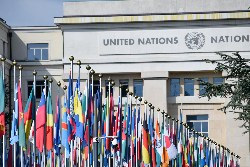Why are ratepayers funding the NZCID?
Why are ratepayers funding the NZCID?
By Matt L, on September 3rd, 2013
Infrastructure plays a critical part in our everyday lives and improving our infrastructure is seen as a way of improving our economy and our standard of living. The group pushing for more and better infrastructure more than any other is the New Zealand Council for Infrastructure Development (NZCID). Their description of themselves below makes them sound like they are some sort group of experts, diligently working in the best interests of New Zealand.
NZCID is an authority at the forefront of infrastructure development issues. The Council promotes best practice in national infrastructure development through research, advocacy and public and private sector collaboration. NZCID members come from diverse sectors across New Zealand, equity owners, service providers, public sector agencies, and major infrastructure users.
Together we share a clear purpose; world class infrastructure for the benefit of all New Zealanders.
But there is a major problem, while their name and description sounds really good, they are really nothing more than a glorified lobby group whose only purpose is to get as much stuff built as possible. Take a look at their objectives. I have highlighted some of the key parts related to this.
Advertisement - scroll to continue readingThe Council’s objectives are to:
(a) identify and prioritise specific infrastructure needs;
(b) facilitate and encourage the provision of world class infrastructure, by both public and private sectors, in an economically, socially and environmentally responsible manner;
(c) influence central, regional and local government decision making on the provision of infrastructure;
(d) identify the impediments to infrastructure provision, and provide solutions;
(e) assist in creating an environment where:
(i) it is accepted by all governments and the community that New Zealand must have world class infrastructure if it is to achieve its economic and social potential;
(ii) the consequences of failing to provide world class infrastructure are understood;
(iii) the respective roles of both public and private sectors in the provision of infrastructure are accepted;
(f) become the leading non government point of reference on issues relating to infrastructure provision;
(g) provide a voice, for the Council’s membership, in addressing infrastructure needs for New Zealand; and
(h) do all such lawful things as are incidental to or ancillary to the attainment of the vision and the objectives of the Council.
All of the lobbying is really on behalf of their members of which there are currently 82. Unsurprisingly almost all are companies that benefit directly from investment in infrastructure being construction, consultancy, finance, legal or material supply companies. But perhaps the odd ones are the organisations highlighted in yellow being some of the wider Auckland Council family. At up to $9,000 per membership it means that ratepayers are directly (or indirectly through less dividend in the case of PoA) paying about $45,000 per year just so they can to be lobbied to spend more money on stuff. By comparison, notice the lack of government agencies on the list, especially the NZTA.
So what lobbying have the NZCID been doing in Auckland? Well they were perhaps of the strongest proponent of the wish-list that the council pushed as part of the Auckland Plan, one that happens to have up to a $15 billion shortfall in agreed funding and which most projects haven’t been assessed and are unlikely to be needed if the funding proposals go ahead.
But while they are busy supporting building lots of stuff, they are also pushing behind the scenes to make that what is built more expensive. For the CRL they want to change the route that would make it longer, more costly and less effective.
One of the documents from my recent OIA request to the Ministry of Transport shows that this approach isn’t only being used on the CRL but also on a future harbour crossing too. Again this is despite numerous studies by the NZTA and probably some of the NZCID member organisations on what route is best.
As mentioned earlier, this group only really care about building as much stuff as possible to benefit it’s members. It’s seriously about time that the Auckland Council and its subsidiaries followed the lead of government agencies in not financially supporting this kind of approach. Paying money to help be lobbied to spend more is not a good use of ratepayer funds.
ENDS





 Gordon Campbell: On bird flu, AUKUS entry fees and Cindy Lee
Gordon Campbell: On bird flu, AUKUS entry fees and Cindy Lee Binoy Kampmark: Israel’s Anti-UNRWA Campaign Falls Flat
Binoy Kampmark: Israel’s Anti-UNRWA Campaign Falls Flat Peter Dunne: Luxon Gets Out His Butcher's Knife - Briefly
Peter Dunne: Luxon Gets Out His Butcher's Knife - Briefly Binoy Kampmark: Warring Against Encryption, Australia Is Coming For Your Communications
Binoy Kampmark: Warring Against Encryption, Australia Is Coming For Your Communications Gordon Campbell: On Fast Track Powers, Media Woes And The Tiktok Ban
Gordon Campbell: On Fast Track Powers, Media Woes And The Tiktok Ban Binoy Kampmark: Censorship Wars, Elon Musk, Safety Commissioners And Violent Content
Binoy Kampmark: Censorship Wars, Elon Musk, Safety Commissioners And Violent Content